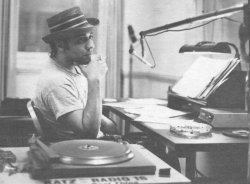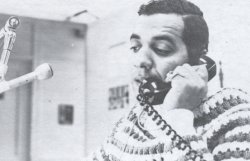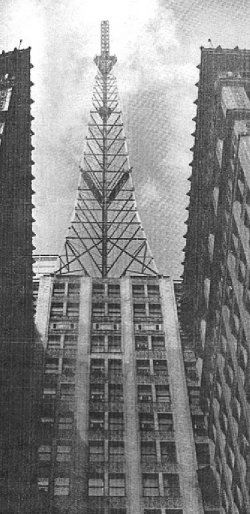Radio Articles
Race Radio Crossed the Color Lines
In the the mid-twentieth century, the radio business was a lot different behind the scenes than it is today. One of radio’s unseen workers from those days has some pleasant memories.
Tom Lyons grew up in rural Southern Illinois, and he has vivid memories of listening to KWK on the farm radio. “I always liked it. ‘Recall It and Win’ with Tom Dailey and Gil Newsome’s record shows. Somehow as a ten-year-old kid I was really fascinated by it all…Later when I was a high school student, it was Spider Burks, Bob Osborne, Ron Lundy, Anthony Oren on KWIX-FM and some guys on the old Star-Times’ KXOK like Art Rice and Ed Bonner. These guys played great music.” As he got older, Lyons set his sites on a radio career: “Radio represented a quality of life I wanted. It was a romanticism, the fact that I would like what I was doing.”
He joined Local 4 of the International Brotherhood of Electrical Workers and got on their engineering “extra board” in 1968. “At that time you had engineers on duty at the studios and usually controlling the transmitter by remote control. They had to be on duty twenty four hours a day, so I’d get a shift to work here and there. I’d work at KXOK, KSD, WIL. It was fun. When vacation openings came up in 1968 at KATZ, Lyons got the assignment. He showed up at the studios, which were in the Arcade Building downtown. “Gabriel was their all-night disc jockey, and I remember he’d put the microphone on a long cord and run it over by the window and do his show there. The regular studio was pretty well insulated, but he wanted the sounds from outside.”
At that time, KATZ’s announcers were all using “drop-ins,” which were pre-recorded sound effects and quick voice quips, and this kept the engineers busy. As the “extra board” man, Lyons mainly did studio work. “I could do production work there, even though you had to do it while you were on the air.” So he’d be editing audio tracks for commercials and mixing music beds while records were playing on the air.

“Doug Eason and Donnie Brooks were both announcers there during those days and their on-air styles were very different. Doug was laid-back. He was about the easiest person I’ve worked for. Donnie was flamboyant, aggressive, had a lot of ego. This wasn’t necessarily bad. He was flashy.”

The disc jockeys of the ‘60s and ‘70s were true celebrities in the eyes and ears of their listeners, and they worked hard to earn that status. Because of that, the announcers each established a certain persona and then developed it. Lyons says his fellow engineers helped him when it came to dealing with the personalities. “By the time I actually got to the point where I was working with these disc jockeys, I had been told who had the egos and who were the ones who were okay…Dr. Jockenstein (Rod King) really developed a niche. He wasn’t the ego type. He understood what life was like. All the people who worked with him loved him…Back then they had engineers and they had talent, and the end product was electrifying. You could feel the energy coming through the radio.”
The on-air staff at KATZ were all male, and all African-American, or “Negro” as was the popular term of the day. It gave a man like Lyons, who had been raised on an Illinois farm, a much different perspective on things. “You became aware of injustices, improper treatment by police and malicious prosecution.”
And although they had earned the aforementioned celebrity status, most black announcers in the ‘60s and ‘70s were not paid as well as their white counterparts, which meant, Lyons says, that they were always hustling, doing personal appearances or concert promotion to earn extra money.
It was a different time in the radio business and it was an era that will never be repeated, but for Tom Lyons, the memories are good.
(Reprinted with permission of the St. Louis Journalism Review. Originally published 06/04)


